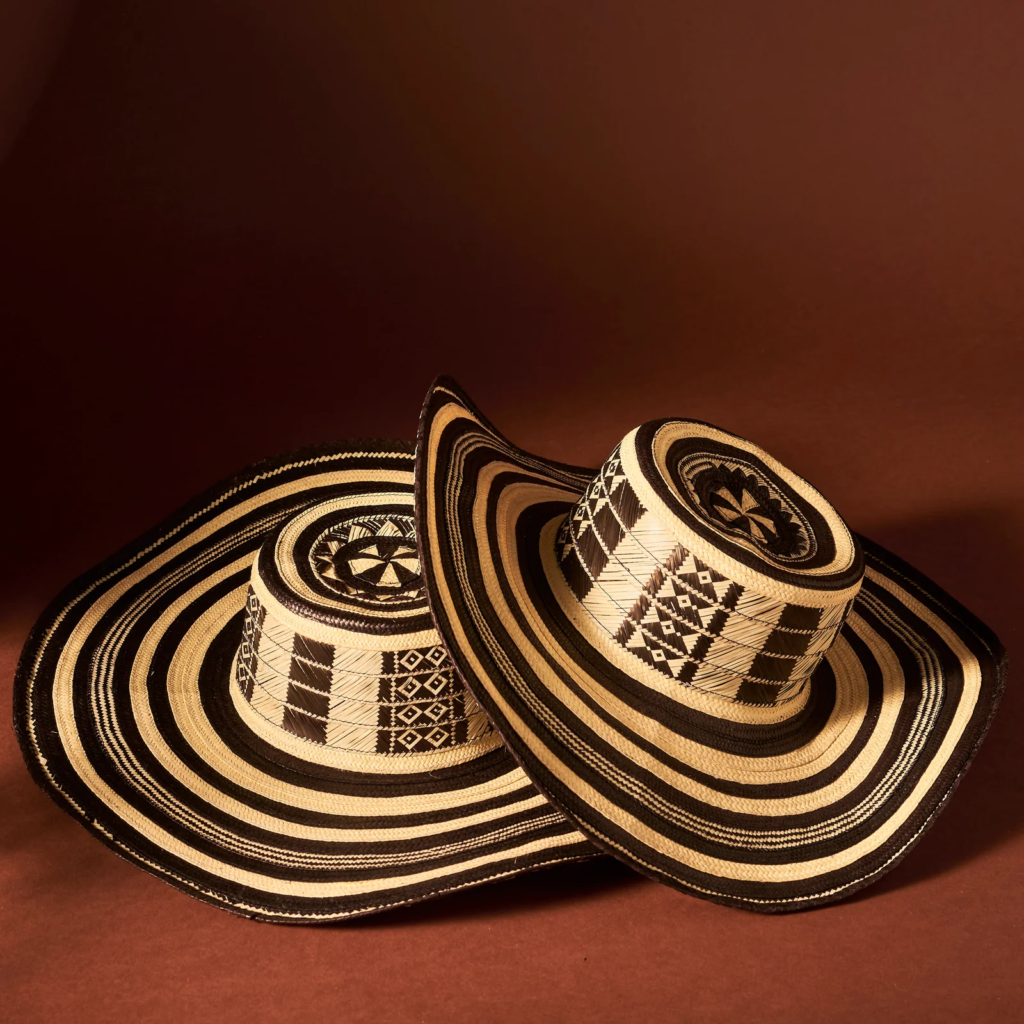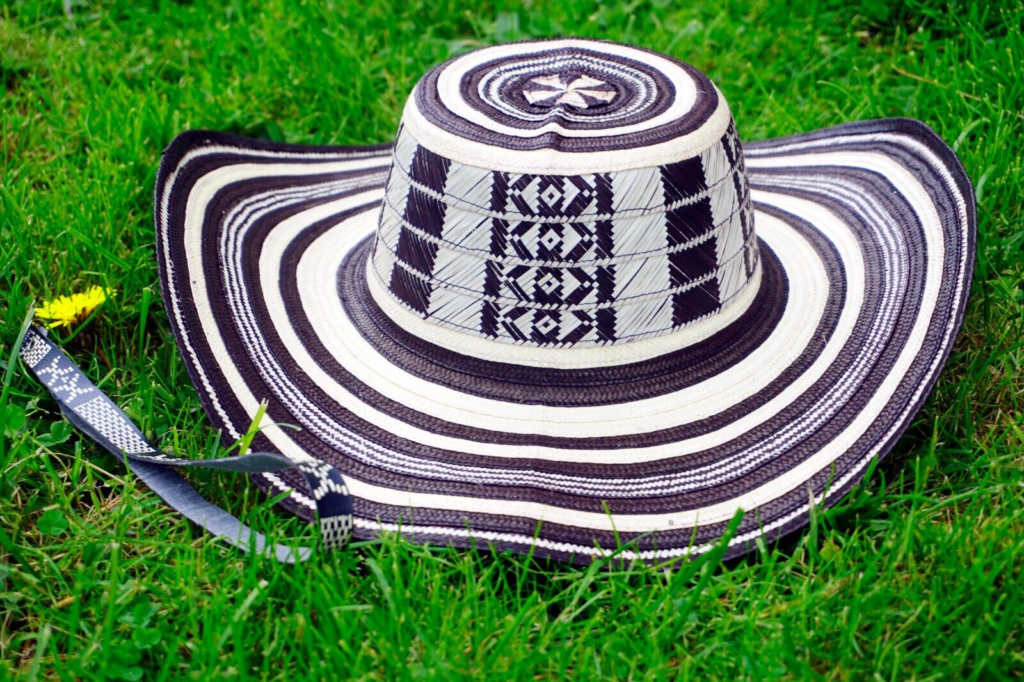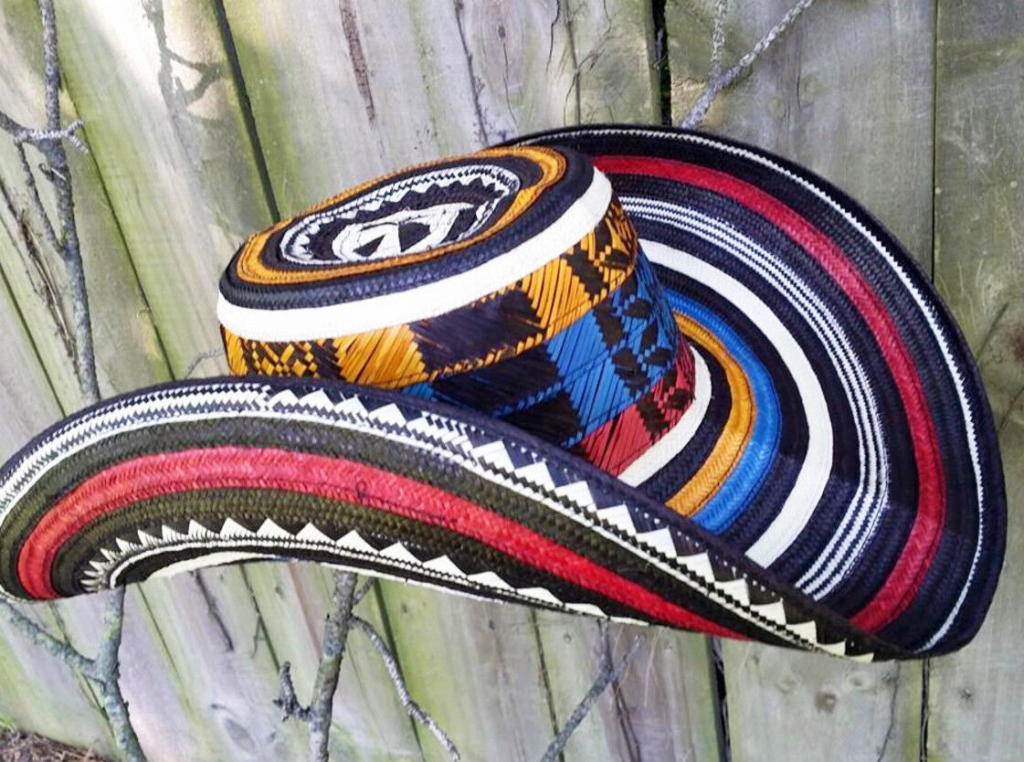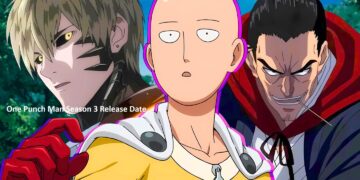The Sombrero Vueltiao, a distinctive black and white hat, is far more than just headwear in Colombia. It’s a powerful symbol of national identity, a testament to indigenous artistry, and a vibrant thread woven into the fabric of Colombian culture. From the sun-drenched plains of the Caribbean coast to the bustling cities, the Sombrero Vueltiao is a ubiquitous presence, representing heritage, tradition, and the enduring spirit of the Colombian people. This article delves into the rich history, intricate craftsmanship, and profound cultural significance of this iconic emblem.
A Legacy Woven in Time: The Origins of the Sombrero Vueltiao
The Sombrero Vueltiao’s origins can be traced back centuries to the Zenú indigenous community, who inhabited the region now known as the departments of Córdoba and Sucre in northern Colombia. They were skilled artisans, renowned for their intricate weaving techniques using locally sourced materials. The Sombrero Vueltiao, originally crafted from caña flecha (arrow cane), was initially designed for practical purposes – providing protection from the harsh tropical sun and rain. Its distinctive circular design and tightly woven structure offered excellent shade and durability, making it an indispensable tool for farmers and laborers working in the fields.
Over time, the Sombrero Vueltiao evolved from a functional piece to a cultural symbol. The intricate patterns woven into the hat began to carry symbolic meanings, reflecting the cosmology and beliefs of the Zenú people. The number of rings, the color variations (though primarily black and white), and the specific designs all held significance, often representing elements of nature, animals, and spiritual concepts.
The Art of Weaving: A Masterpiece of Craftsmanship

The creation of a Sombrero Vueltiao is a meticulous and time-consuming process, passed down through generations of artisans. The caña flecha reeds are harvested, carefully selected, and prepared for weaving. This involves stripping the reeds, drying them, and then dyeing some black using natural dyes derived from local plants. The weaving itself is a complex art form, requiring immense skill and patience. Artisans, often women, work for days, even weeks, meticulously interlacing the reeds to create the characteristic circular pattern and the tightly woven structure.
The quality of a Sombrero Vueltiao is often judged by the fineness of the weave and the number of vueltas (turns or rings). A higher number of vueltas signifies a more intricate and labor-intensive creation, and therefore, a more valuable hat. Some exceptionally fine Sombreros Vueltiaos can have over 20 vueltas and take months to complete. These are often considered heirloom pieces, passed down through families as a symbol of cultural heritage.
Beyond Fashion: The Cultural Significance
The Sombrero Vueltiao transcends its status as mere headwear. It’s a powerful symbol of Colombian identity, representing the country’s rich indigenous heritage and its unique cultural blend. It is a symbol of resilience, tradition, and the enduring spirit of the Colombian people. The hat is worn with pride at festivals, parades, and cultural events, serving as a visual reminder of the country’s roots.
The Sombrero Vueltiao has also become a fashion icon, embraced by designers and celebrities, both nationally and internationally. While its traditional form remains central, contemporary adaptations have emerged, incorporating new colors and materials. This has helped to keep the Sombrero Vueltiao relevant and appealing to younger generations, ensuring its continued presence in Colombian culture.
A Symbol of Unity and Pride

The Sombrero Vueltiao is more than just a personal adornment; it’s a shared symbol that unites Colombians across different regions and social strata. It represents a common cultural thread that connects the diverse communities of Colombia. Whether worn by a farmer in the fields or a politician in the capital, the Sombrero Vueltiao serves as a powerful reminder of shared history and cultural identity. It is a symbol of national pride, representing the creativity, resilience, and artistry of the Colombian people.
Preserving the Tradition: Supporting Artisans
The continued survival of the Sombrero Vueltiao tradition depends on supporting the artisans who dedicate their lives to its creation. By purchasing Sombreros Vueltiaos directly from artisans or through fair trade organizations, consumers can contribute to the preservation of this important cultural practice and ensure that the skills and knowledge are passed on to future generations. Supporting these artisans not only sustains their livelihoods but also helps to keep the vibrant tradition of the Sombrero Vueltiao alive.
The Sombrero Vueltiao: A Timeless Icon

The Sombrero Vueltiao is a timeless icon, a testament to the enduring power of tradition and the enduring spirit of the Colombian people. From its humble beginnings as a functional tool to its current status as a national emblem, the Sombrero Vueltiao has woven its way into the heart of Colombian culture. It is a symbol of heritage, artistry, and national pride, a vibrant thread that connects the past, present, and future of Colombia.
(FAQs) About the Sombrero Vueltiao
Q1 What is the Sombrero Vueltiao made of?
Traditionally, it is made from caña flecha (arrow cane), a type of reed native to Colombia.
Q2 What does the number of vueltas (rings) signify?
The number of vueltas indicates the fineness of the weave and the intricacy of the hat. More vueltas generally mean a higher quality and more valuable hat.
Q3 Where does the Sombrero Vueltiao originate from?
It originated from the Zenú indigenous community in northern Colombia.
Q4 Is the Sombrero Vueltiao only worn in Colombia?
While it’s primarily a Colombian symbol, its popularity has spread, and it’s sometimes worn in other parts of Latin America.
Q5 How can I support Sombrero Vueltiao artisans?
You can support them by purchasing Sombreros Vueltiaos directly from artisans or through fair trade organizations that ensure they receive fair compensation for their work.
For More Information Visit Bratish Magazine

















































































